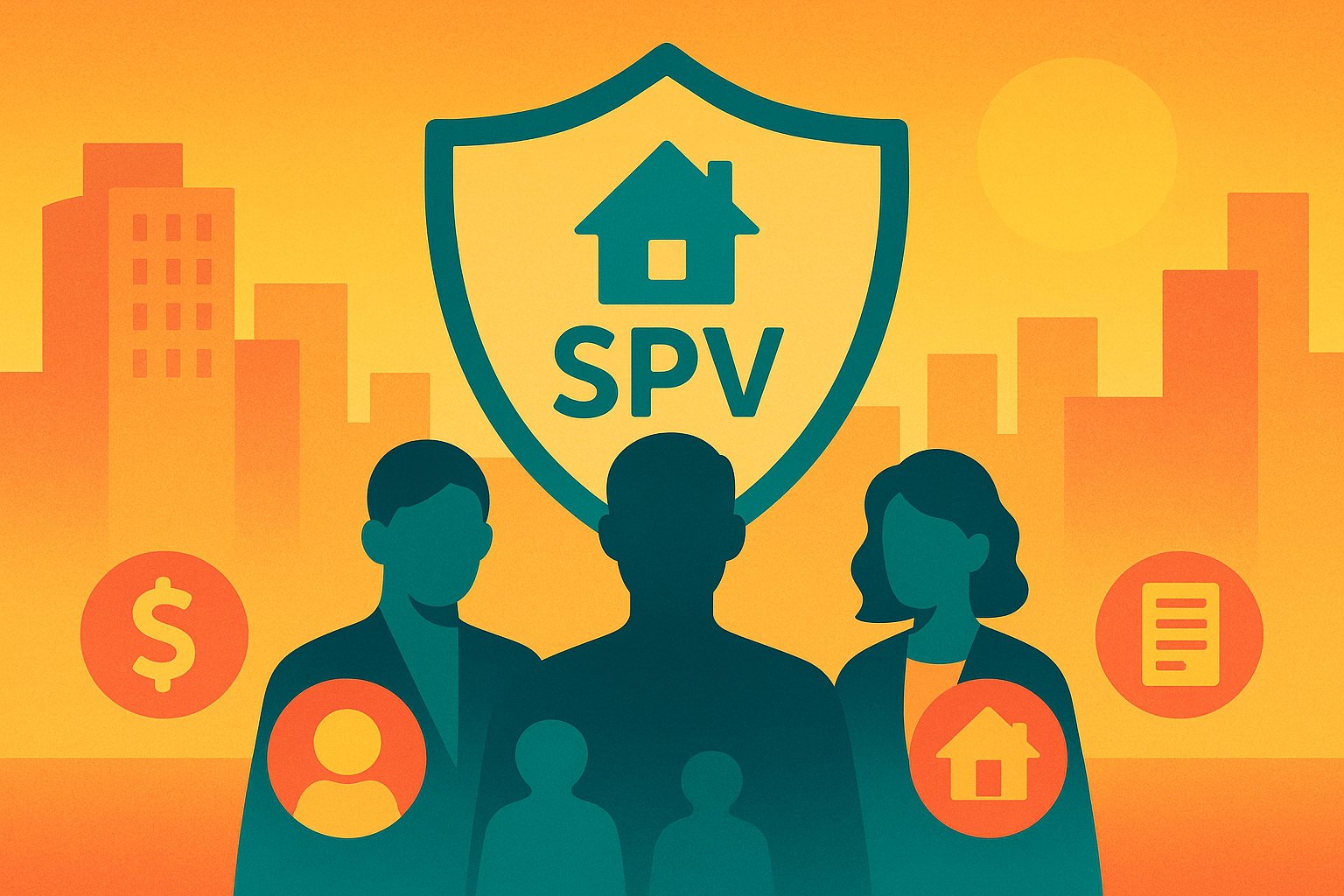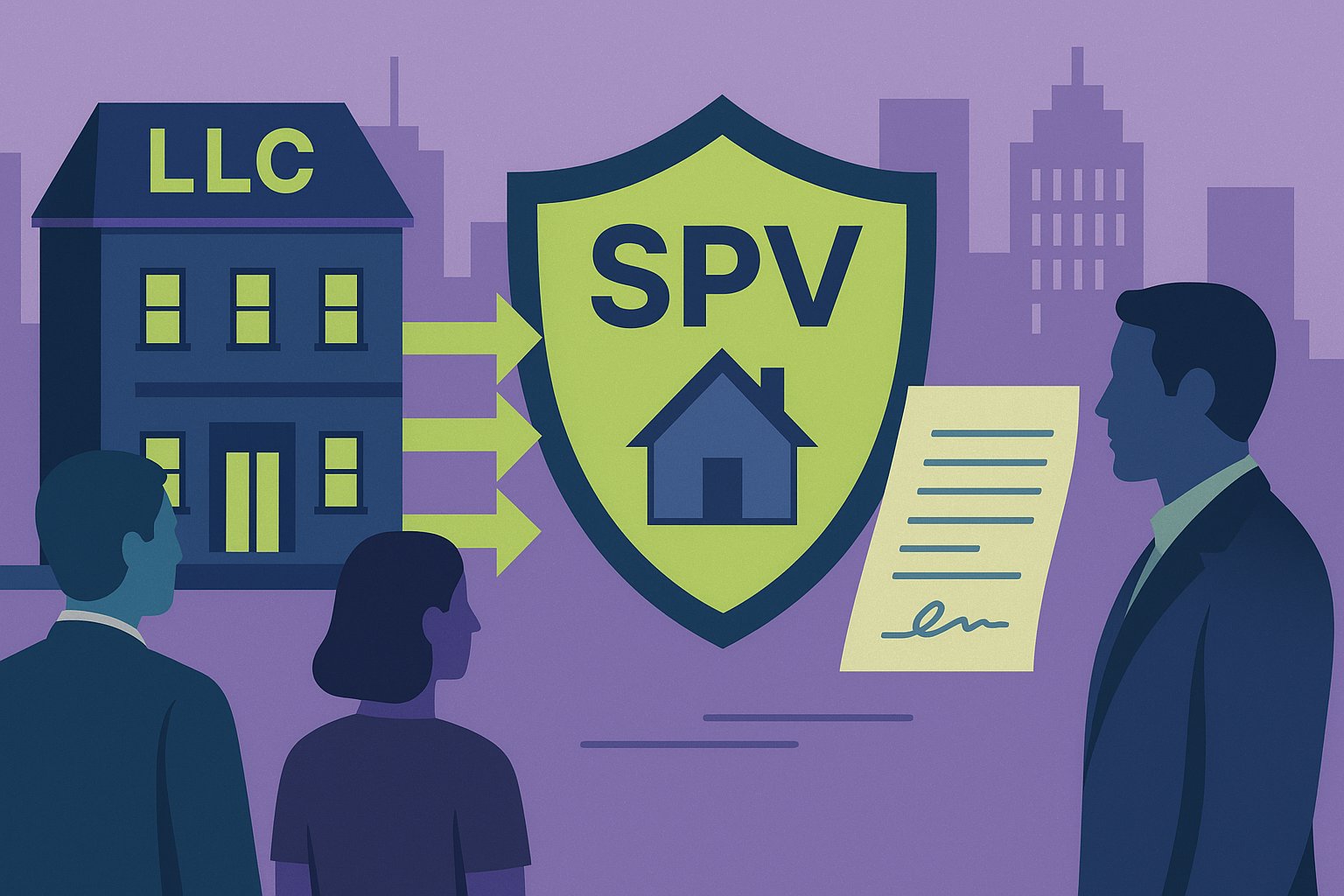The Shielded Pathway to Property Investing
In the evolving landscape of real estate crowdfunding, Special Purpose Vehicles (SPVs) have emerged as a cornerstone innovation designed to safeguard investor capital while simplifying complex transactions. Far more than a mere legal formality, an SPV functions as a dedicated, ring-fenced entity whose sole purpose is to hold a specific real estate asset or project. For everyday investors seeking direct exposure to commercial or residential developments without the burdens of traditional ownership, understanding how SPVs protect their interests is critical. This article unpacks the multifaceted protections SPVs provide—from liability insulation and operational transparency to tax efficiencies and governance clarity—illuminating why these structures are swiftly becoming the gold standard in crowdfunded property deals.
Carving Out Risk: Ring-Fencing Liabilities with Precision
At the heart of the SPV structure lies the principle of risk isolation. By placing each property or project into its own legal entity—commonly an LLC or limited partnership—sponsors ensure that any liabilities arising from construction overruns, environmental claims, or operational disputes remain contained within that entity. Should an unexpected lawsuit emerge or a lender pursue remedies, creditors can only claim against the SPV’s assets and cannot reach into the personal estates of investors or sponsors’ other holdings. This level of legal segregation transforms the way investors perceive risk: instead of worrying about cross-property contagion, they gain confidence that a single project hiccup cannot cascade into broader asset losses.
Clarity in Ownership: Transparent Structures for Peace of Mind
Investors often hesitate when confronted with convoluted syndication deals, where multiple layers of partnerships and opaque capital flows can make it difficult to trace ownership or performance. SPVs cut through this complexity by offering straightforward, single-asset entities that issue membership interests directly correlated to equity contributions. Each investor’s stake is clearly documented in the SPV’s operating agreement or partnership deed, spelled out in precise percentage terms. This clarity extends to financial reporting as well: because the SPV holds only one property, all revenues, expenses, and cash distributions feed into a single set of financial statements, eliminating confusion over which building, loan, or renovation cost generated specific line items.
Governance Guardrails: Balancing Sponsor Control and Investor Rights
Another pillar of investor protection within SPVs is the careful delineation of governance rights. While most SPVs adopt a manager-managed model—granting day-to-day decision-making authority to an experienced sponsor—key decisions such as refinancing, major capital improvements, or early sale triggers require investor approval under predefined voting thresholds. These thresholds, often set at supermajority levels, empower investors to veto actions that stray from the predefined business plan or threaten projected returns. Simultaneously, sponsors benefit from the agility to handle routine property management without repeated investor input. The result is an alignment of efficiency and oversight that casts SPVs as both flexible and accountable structures.
Financial Firewalls: Segregated Accounts and Escrow Protections
Effective SPV setups go beyond legal paperwork—they also institute rigorous financial controls. Investor capital typically flows into escrow or trust accounts managed by independent custodians until closing conditions are met, shielding funds from premature disbursement or misuse. Once deployed, SPV revenues—rents, leasing commissions, or sale proceeds—are deposited into dedicated bank accounts constrained by the SPV’s EIN, with no commingling alongside sponsor operating funds. This segregation not only bolsters auditability but also provides investors with comfort that distributions reflect genuine property performance rather than sponsor cash flow needs.
Tax Transparency: Pass-Through Benefits Without the Headaches
SPVs structured as pass-through entities deliver clean tax profiles directly to investors, minimizing complexity and maximizing deduction opportunities. Income, expenses, depreciation, and interest deductions flow through to each member’s personal or corporate tax return via K-1 statements, ensuring investors capture their proportionate slice of tax benefits. Crucially, because each SPV covers a single property, K-1s are neatly tied to one asset’s performance, sidestepping the intricacies of multi-asset allocations. Investors avoid the double taxation inherent in corporate structures and gain a transparent window into how depreciation or capital improvements influence their bottom line.
Regulatory Compliance: SEC Exemptions Made Manageable
Navigating securities regulations can intimidate sponsors and investors alike, but SPVs simplify compliance under proven exemptions. Most crowdfunded SPV offerings rely on SEC Regulation D (506(b) or 506(c)), allowing unlimited capital raises from accredited investors with or without general solicitation. Some platforms even leverage Regulation A+ to include nonaccredited participants up to $75 million annually. Regardless of the path, the SPV framework confines disclosure documents, subscription agreements, and compliance obligations to a single asset deal, reducing the administrative burden of ongoing filings or state Blue Sky notifications. For investors, this means streamlined documentation and predictable regulatory safeguards across deals.
Exit Discipline: Defined Wind-Down and Liquidity Pathways
A standout benefit of SPV vehicles is the predetermined life cycle baked into the operating agreement or partnership deed. From capital call deadlines and property stabilization milestones to target hold periods and sale processes, every stage of the SPV’s journey is charted in legal terms. When the time comes for the exit—whether through a strategic sale, refinancing recapitalization, or 1031 exchange—the SPV’s governing documents mandate distribution waterfalls that honor preferred returns, catch-up provisions, and carried interest splits. Investors receive clarity on exactly how and when their capital returns, mitigating the dread of open-ended deals or sponsor-led delays.
Performance Oversight: Real-Time Reporting and Auditing
Modern crowdfunding platforms often integrate with SPVs to deliver near real-time dashboards featuring rent rolls, occupancy rates, expense breakdowns, and distribution histories. These automated reporting systems harness property management software and accounting integrations to push financial updates directly to investors, reducing the opacity common in legacy syndication structures. Periodic third-party audits or financial reviews can be stipulated in SPV agreements, further underscoring the emphasis on accuracy and trust. With transparent metrics at their fingertips, investors can monitor asset performance and flag any divergence from underwriting assumptions before small variances snowball into significant issues.
Sponsor Alignment: Incentive Structures That Matter
Investor protection through SPVs extends to the design of sponsor compensation mechanisms. By incorporating tiered waterfall structures, hurdle rates, and catch-up provisions, SPV agreements ensure that sponsors only participate in profit splits once investors have secured their preferred returns. This creates a powerful alignment: the sponsor’s upside only materializes when the project performs as promised. Furthermore, sponsors often commit co-investment capital into the SPV, placing their own funds at risk alongside outside investors. Such skin-in-the-game provisions act as additional deterrents against reckless project management, reinforcing the shared objective of maximizing returns.
Resilience in Uncertainty: Contingency Planning Built In
Real estate ventures inevitably encounter unexpected twists—market fluctuations, construction delays, or regulatory shifts. Robust SPV agreements anticipate these challenges by establishing contingency reserve accounts, capital call provisions for extraordinary events, and clear protocols for renegotiating project timelines. If initial lease-up rates falter, for instance, the SPV can draw on a pre-funded reserves pool while sponsors implement marketing ramp-ups. Should cost overruns threaten budget stability, capital call clauses define how much additional equity is required, the notice period for investors, and the consequences of non-participation. Through these foresighted measures, SPVs transform uncertainty into structured response mechanisms, preserving project viability and investor confidence.
SPVs as Pillars of Investor Protection
Special Purpose Vehicles stand at the forefront of investor-centric innovation in real estate crowdfunding, knitting together legal insulation, financial transparency, regulatory compliance, and performance alignment into a resilient structure. By ring-fencing each deal, delineating governance rights, segregating capital flows, and embedding rigorous reporting and exit disciplines, SPVs address the traditional pain points of joint venture and syndication models. For investors, this translates into peace of mind: a clear title to one property, defined cash flow pathways, and a roadmap for both upside participation and downside safeguards. As crowdfunding continues to unlock new avenues for property investing, SPVs will remain indispensable allies for sponsors and participants seeking structured, secure, and scalable deals.




